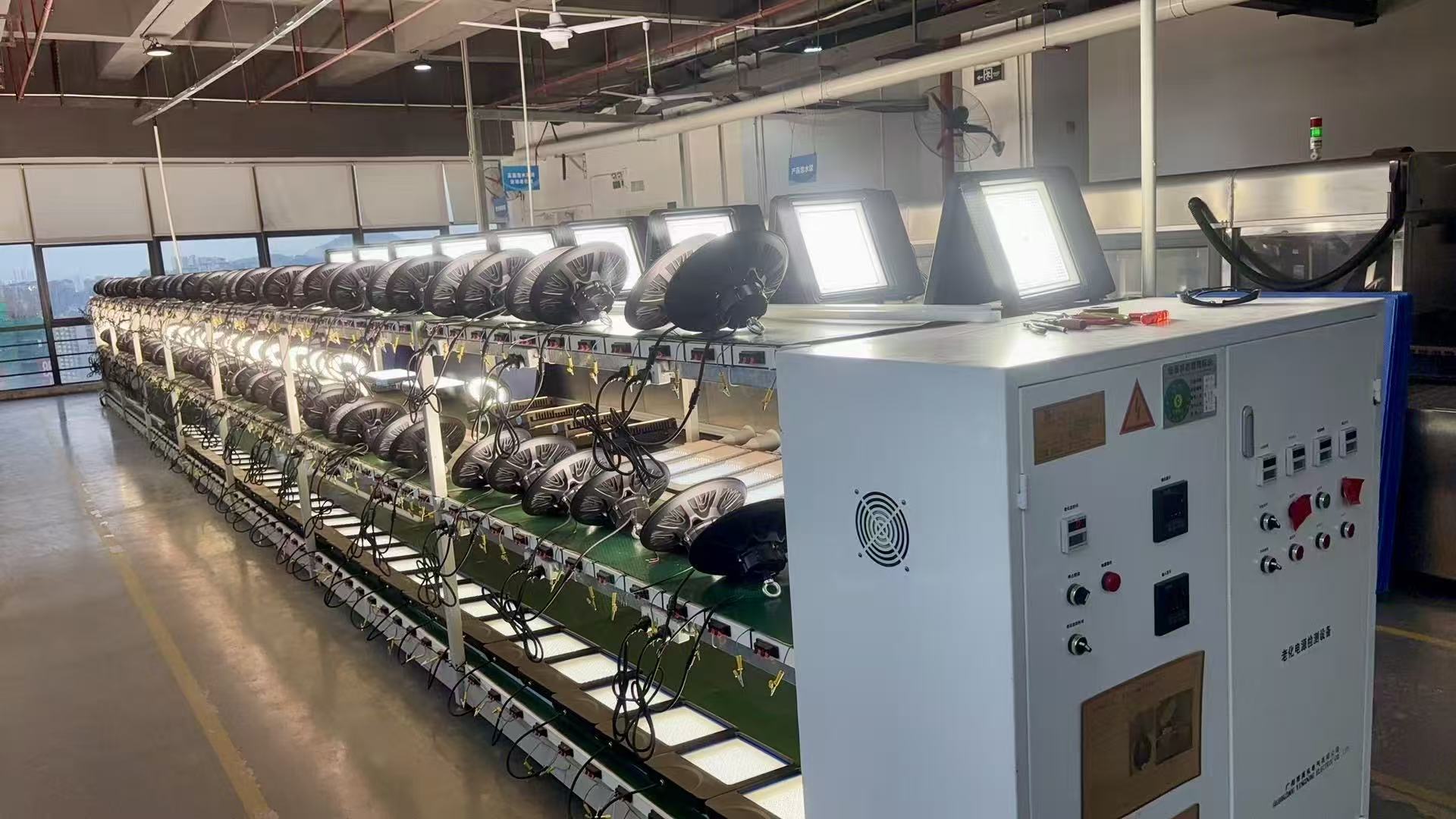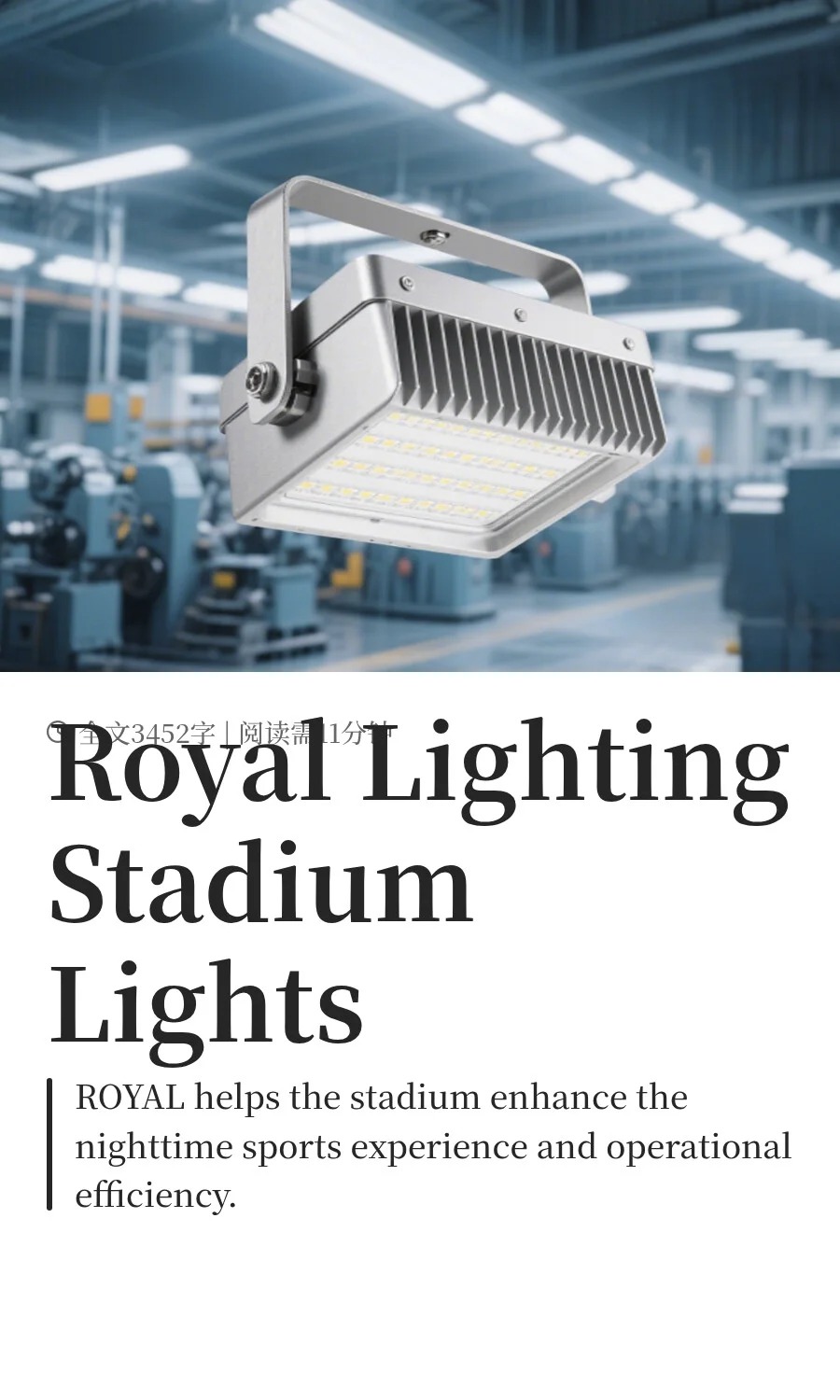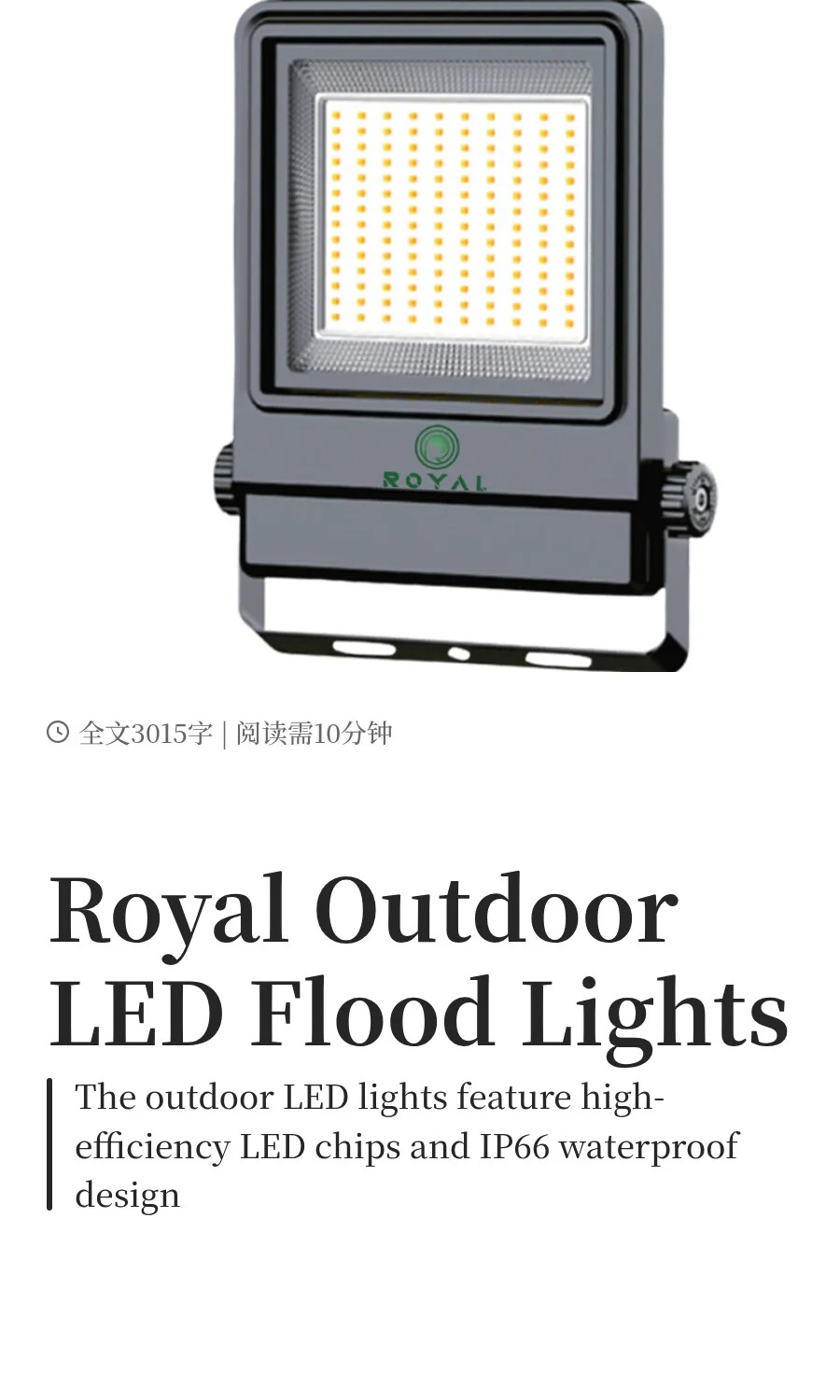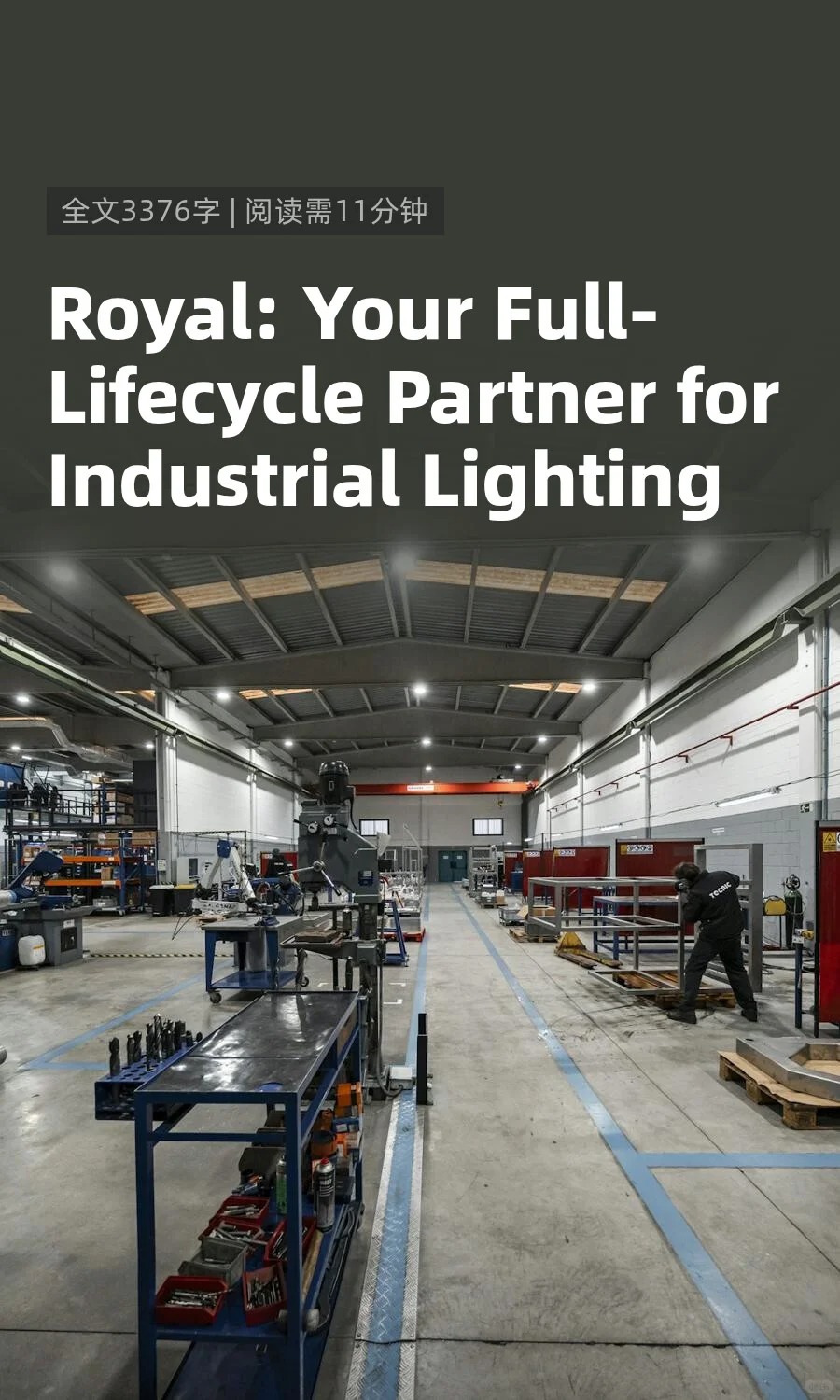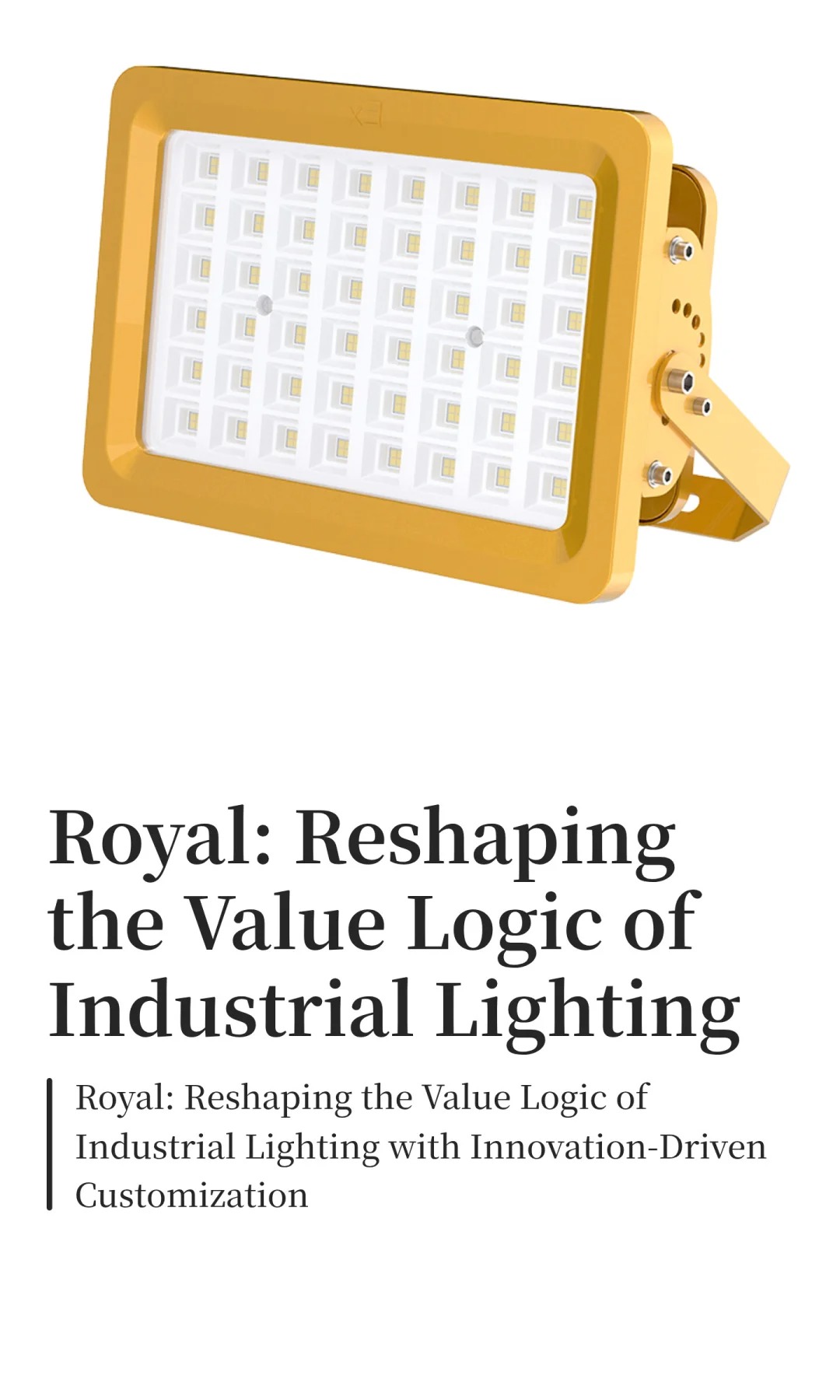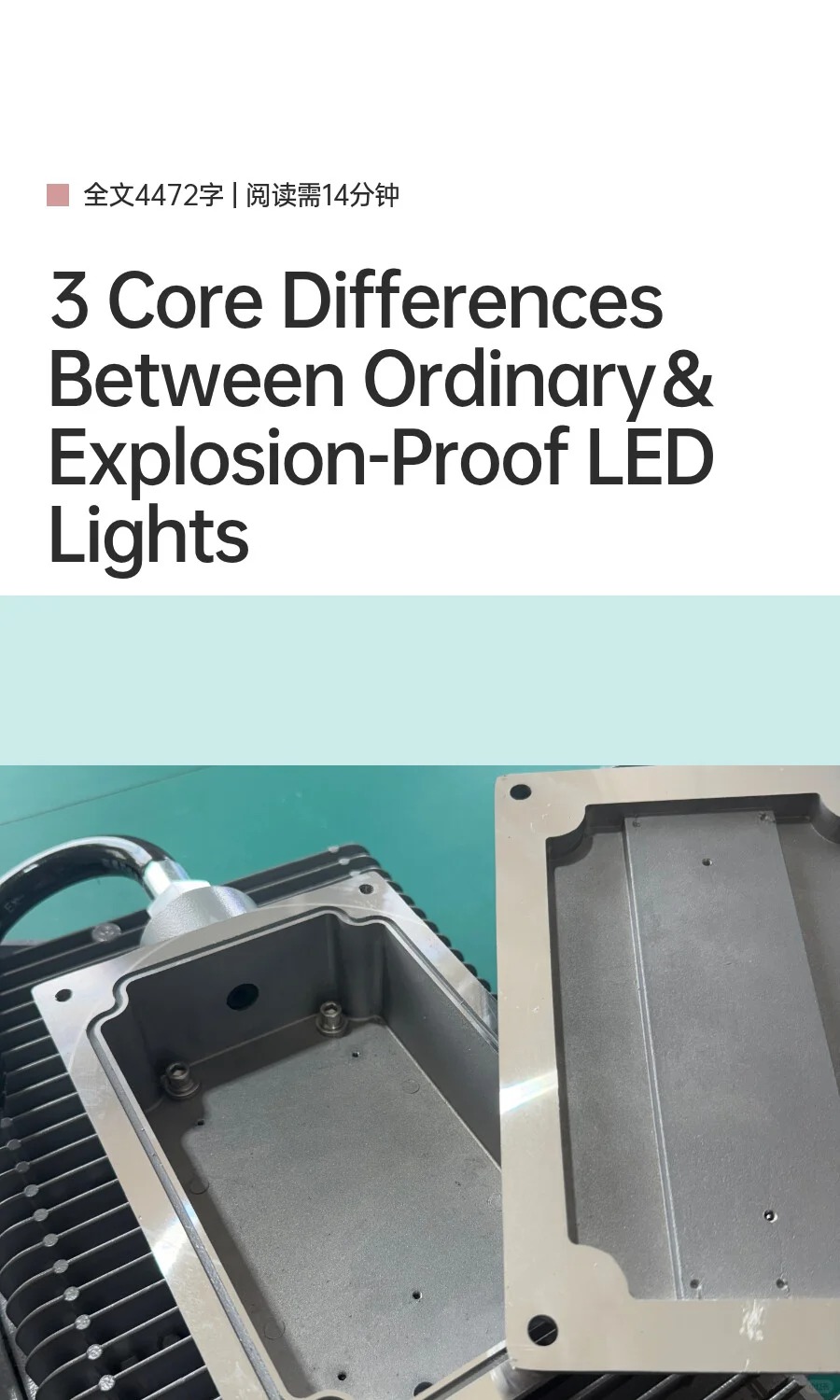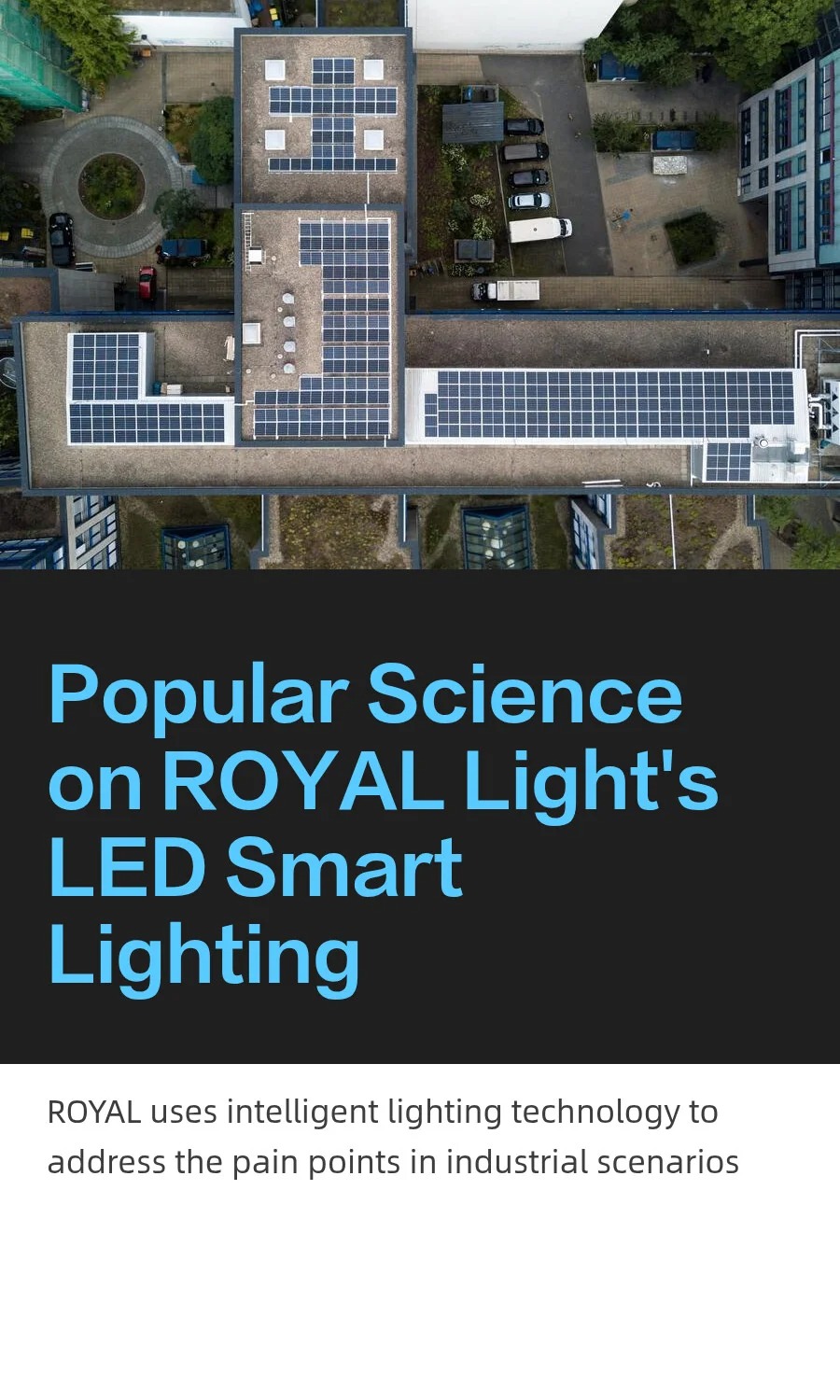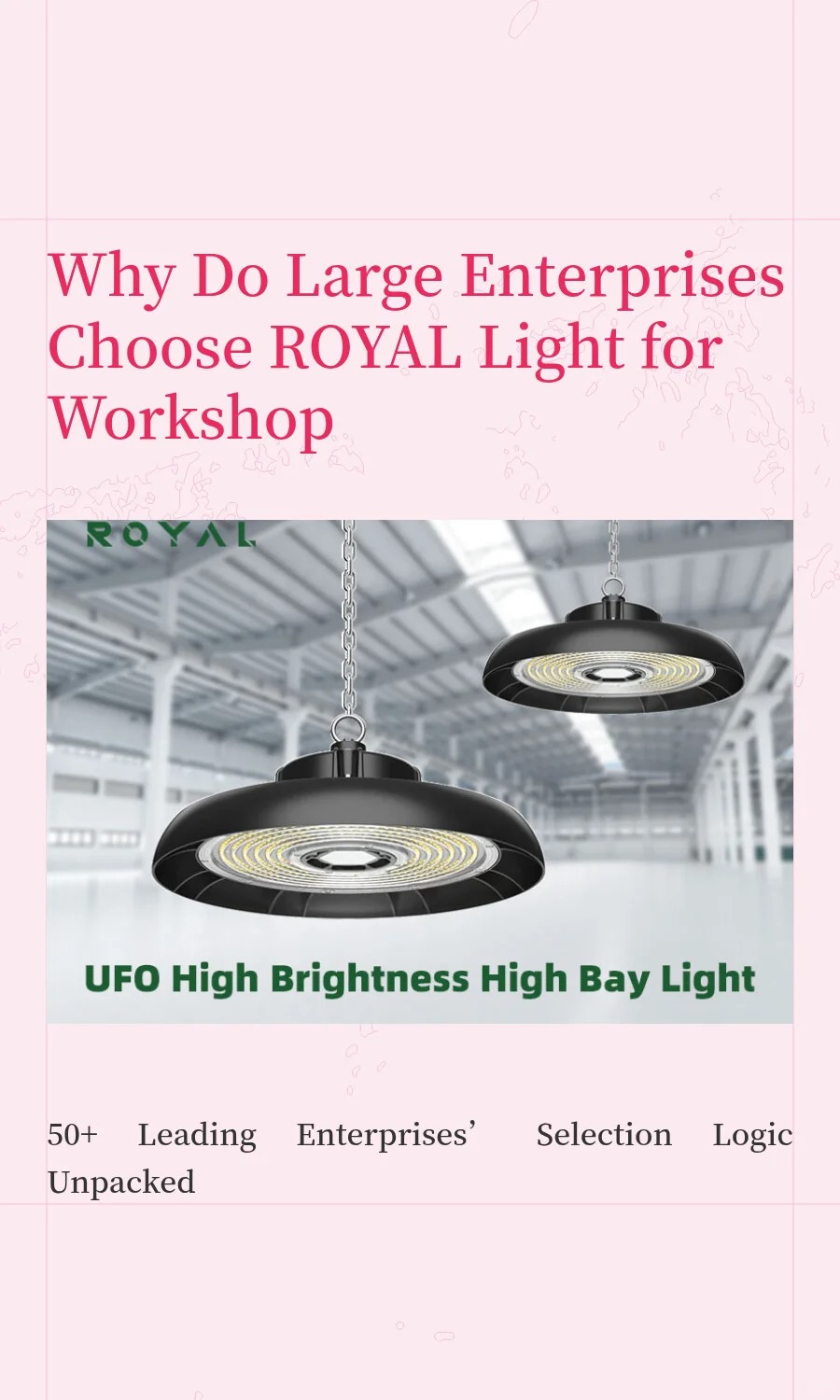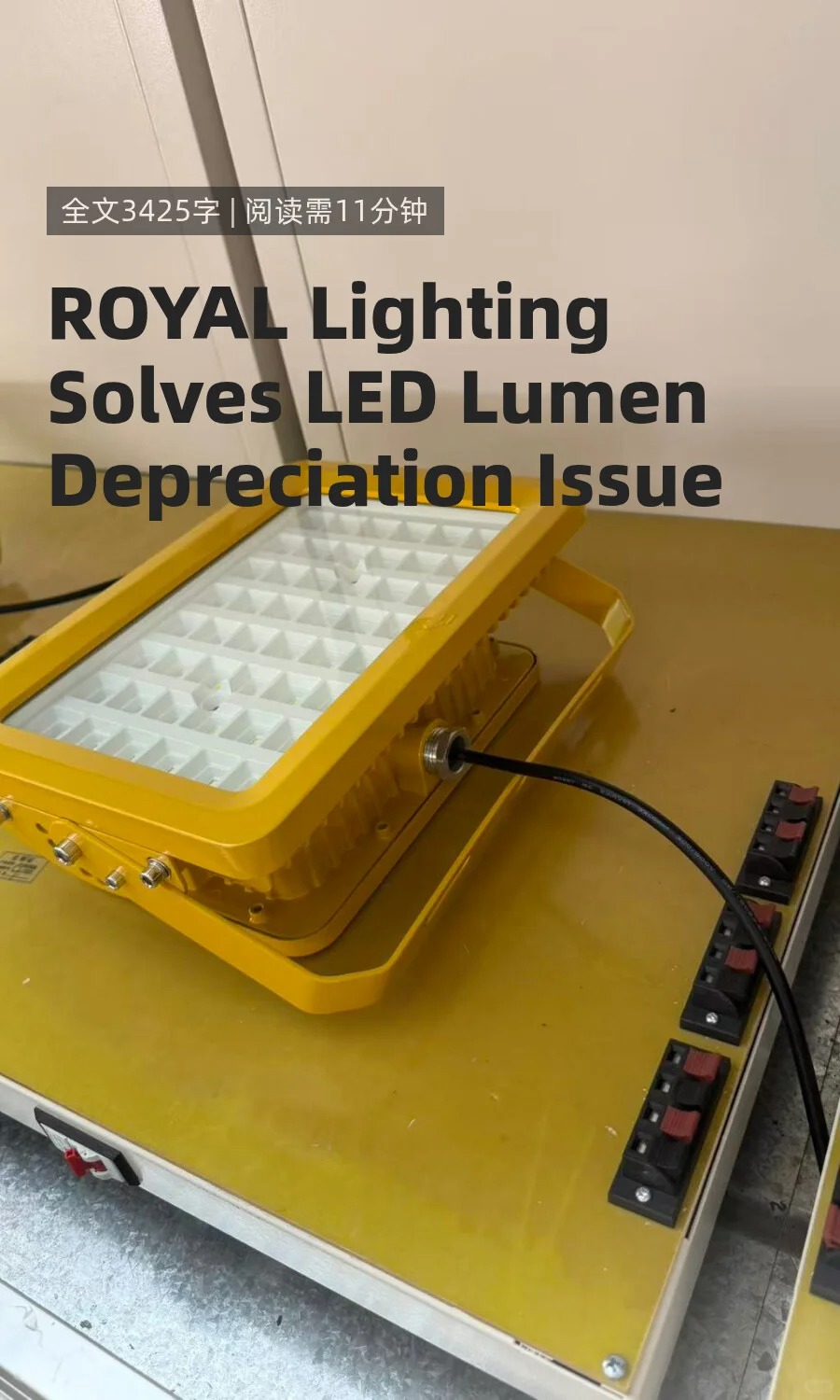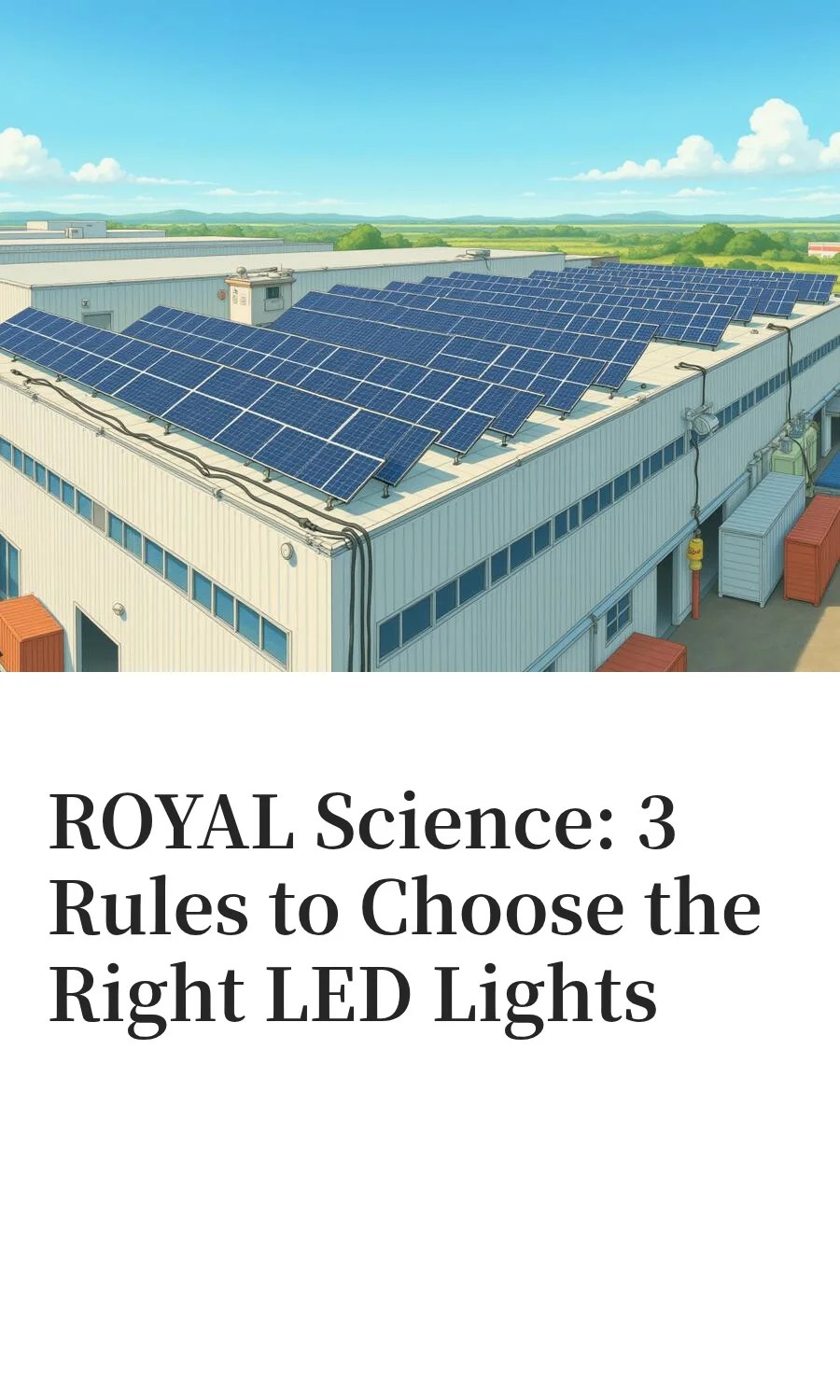ROYAL Lighting Guide: 3 Steps to Choose the Right Industrial High-Bay Lights – From Wattage & Color Temperature to Quantity
In industrial production scenarios, high-bay lights are not just tools for "illuminating spaces" – they directly impact production efficiency, operational safety, and employees’ visual comfort. For instance, precise part inspection requires accurate color discrimination, high-dust workshops need durable fixtures, and tall factories demand uniform lighting. Choosing the wrong high-bay lights may lead to increased product defect rates and higher maintenance costs. Based on ROYAL Lighting’s years of experience serving industrial clients like Baowu Group and BYD, we break down how to accurately match workshop needs and select the right LED high-bay lights from three core dimensions: wattage, color temperature, and quantity.
Higher wattage for high-bay lights is not always better. Excessively high wattage wastes energy, while insufficient wattage fails to meet lighting needs. The key is to make a comprehensive judgment based on workshop height, area, and operation precision:
Low-height workshops (5-8m, e.g., electronic assembly workshops, small warehouses): These scenarios do not require strong light penetration, so 50-150W is sufficient. Take ROYAL’s ROG01 high-bay light as an example: the 50W model has a total luminous efficacy of 150-200LM/W. Equipped with a PC optical lens, it can cover an area of 20-30㎡ and save 60% more energy than traditional fluorescent lamps. It is suitable for scenarios with moderate brightness requirements, such as electronic component assembly and light processing.
Medium-height workshops (8-12m, e.g., mechanical processing workshops, medium-sized factories): A balance of brightness and illumination range is needed, so 150-250W is recommended. ROYAL’s ROG04 high-bay light (100-240W adjustable) uses imported Lumileds light sources. The 150W model can achieve a ground illuminance of 300-500lux at a height of 10m, complying with the GB 50034-2013 industrial lighting standard. It meets the needs of operations like machine processing and material sorting.
High-height workshops (over 12m, e.g., heavy-duty factories, logistics and warehousing centers): High power is required to ensure light penetration, so 250-500W is the optimal choice. ROYAL’s ROG03 high-bay light (50-300W) and ROG09 high-bay light (100-200W) can be used in combination. The 300W model has an illumination radius of 8-10m at a height of 15m. With an ADC12 die-cast aluminum heat dissipation structure, its light decay rate is less than 2% during long-term use, making it suitable for tall spaces like steel and automobile manufacturing facilities.
Special reminder: For workshops with energy-saving needs, prioritize ROYAL’s "low-wattage with high luminous efficiency" models. For example, the 100W ROG02 high-bay light has a luminous efficacy of 150-190LM/W, which can replace traditional 500W metal halide lamps and save over 3,000 kWh of electricity annually.
Color temperature directly affects visual experience and operational accuracy. Different scenarios have significantly different color temperature requirements. Meanwhile, pay attention to the color rendering index (Ra) – the higher the value, the better the ability to restore the true color of objects, avoiding production errors caused by color misjudgment:
Cool white light (6000K, customizable): Suitable for scenarios requiring accurate color discrimination, such as precision inspection, electronics, and textiles. ROYAL’s high-bay lights come with a default 6000K color temperature and a color rendering index of Ra≥80, which can clearly show surface defects of parts and the color of solder joints on electronic components. For example, after an electronics factory adopted ROYAL’s ROG04 high-bay lights, the part inspection error rate decreased by 12%.
Neutral white light (4500-5000K): Suitable for mechanical processing and assembly workshops. The light is soft and non-glaring, balancing brightness and comfort, and reducing visual fatigue for employees during long-term operations. ROYAL can customize products in this color temperature range according to customer needs.
Warm white light (3000-4000K): Suitable for warehouses and heavy machinery workshops. The warm light reduces eye irritation caused by metal reflections, preventing dizziness from strong light during operations. ROYAL’s ROG06 high-bay light (50-200W) supports warm white light customization, making it suitable for scenarios like mining and metallurgy.
In addition, all ROYAL high-bay lights have passed flicker tests (flicker index < 0.1%), avoiding visual fatigue caused by light flicker – especially suitable for scenarios requiring long-term focused operations.
The quantity of high-bay lights needs to be calculated based on the fixture’s beam angle, workshop area, and lighting uniformity requirements. The core is to ensure no dark areas or direct glare, while controlling total energy consumption:
Determine the beam angle: ROYAL’s high-bay lights offer multiple beam angles, such as 60°/90°/120°. Narrow angles (60°) are suitable for high-height workshops (strong concentration), while wide angles (120°) are ideal for low-height workshops (wide coverage).
Calculate spacing and quantity: Taking the common 120° beam angle as an example, the recommended fixture spacing is 1.2-1.5 times the workshop height. For instance: A 1,000㎡ workshop with a height of 10m uses ROYAL’s ROG01 high-bay lights (150W, 120° beam angle, covering approximately 30㎡ per fixture). In this case, 33-35 fixtures are needed. A matrix layout with "12m spacing × 8m row spacing" can ensure a ground lighting uniformity of ≥0.7 (industrial first-level standard).
Adjust with smart solutions: ROYAL’s smart lighting solutions can further optimize the quantity – through microwave radar sensing (equipped in some of ROYAL’s high-bay lights), brightness is automatically increased in areas with dense personnel/equipment and reduced in vacant areas. This meets dynamic needs without excessively increasing the number of fixtures. Additionally, ROYAL’s Smart Lighting Cloud Platform can real-time monitor illuminance in all areas and fine-tune fixture positions and quantities based on actual usage feedback, avoiding waste.
Industrial scenarios have diverse needs, and a single product cannot adapt to all situations. ROYAL Lighting not only provides the ROG series of high-bay lights covering 50-500W (all certified by CE, ATEX, and explosion-proof standards, suitable for industrial scenarios in 42 countries worldwide) but also offers "one-on-one lighting design + product customization" services based on customers’ workshop CAD drawings, operation types, and energy-saving goals. From wattage and color temperature to installation methods (ceiling-mounted, suspended, lifter-mounted), every detail is tailored to needs. Moreover, all products come with a 5-6 year warranty, reducing long-term maintenance costs.
